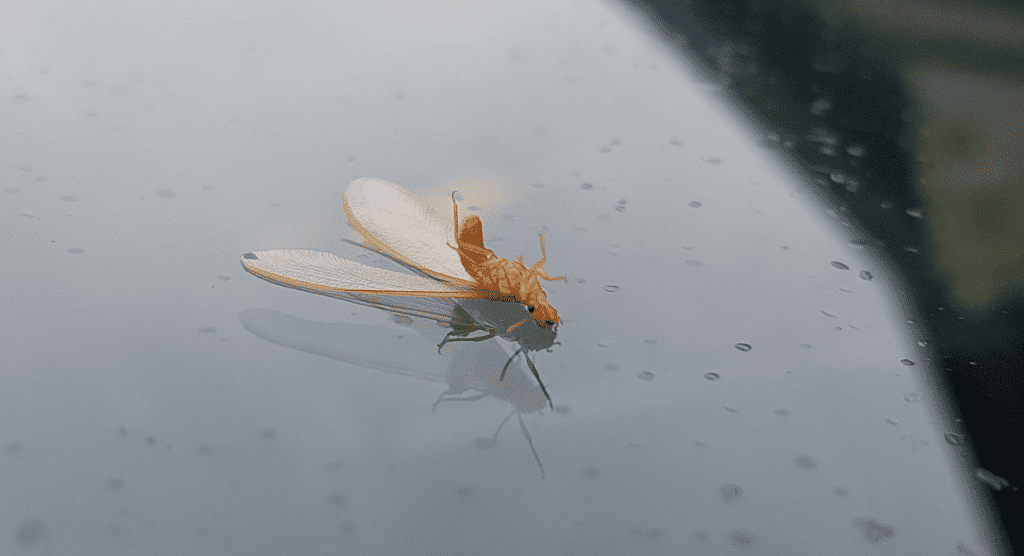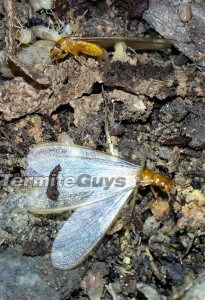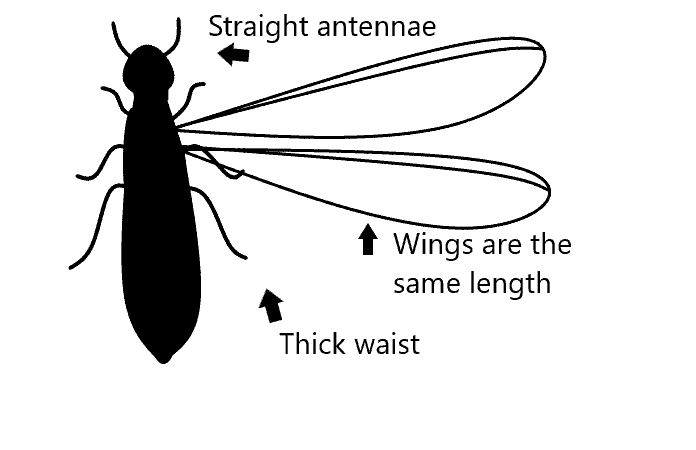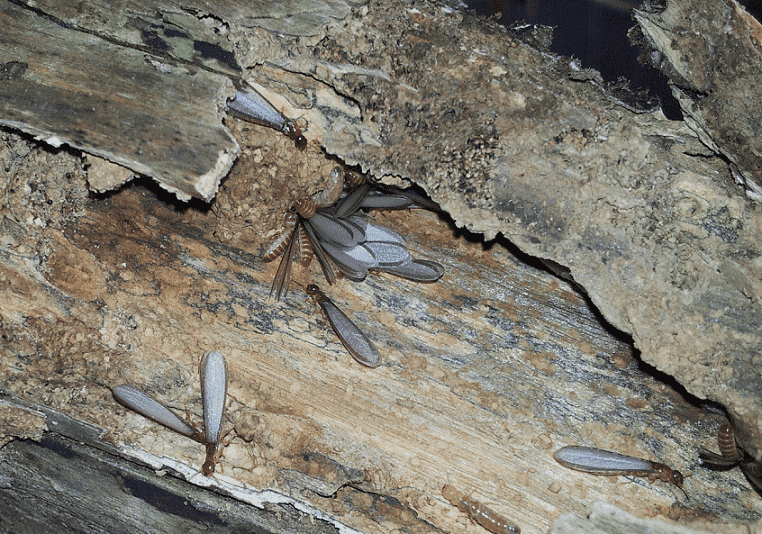The Ideal Conditions for Termite Swarming in Brisbane
Termite swarming typically happens during the warmer months in Brisbane, from November through March, when humidity levels are high. After storms or heavy rainfall, these conditions are even more favorable for swarming. The rain softens the ground and provides the moisture termites need to thrive, while the warmth encourages them to leave their existing colonies to start new ones.

Flying Termites’ Colonizing Flight and Nesting Habits
Flying termites, also known as alates, are reproductive members of termite colonies. Their primary role is to leave the colony, mate, and establish new nests. During their colonizing flight, alates will swarm in large numbers, flying for only a short distance before finding a suitable nesting spot. They then shed their wings, mate, and begin forming a new colony.
Termites favor high-moisture environments for their nests, as they rely on damp conditions to survive. This is why areas around Brisbane that have experienced heavy rain or have untreated water leaks are particularly vulnerable to termite infestations.
Why Flying Termites Are Attracted to Light
Flying termites are strongly attracted to light sources, which is why they are often seen swarming around windows, light bulbs, and porch lights at dusk or after dark. This behavior can lead them indoors, particularly if windows or doors are left open or if screens are not properly secured.
Once inside, flying termites may shed their wings and attempt to establish a colony. While the sight of dozens of winged insects can be distressing, it’s important to remain calm and take appropriate steps to address the situation.

High-Moisture Areas: A Magnet for Termite Nests
Moisture is a critical factor in attracting termites. Homes with high-moisture areas, such as leaky roofs, broken pipes, or poor drainage systems, are prime targets for termites looking to establish new colonies. Some common areas that are vulnerable to termite nests include:
- Roof cavities with leaks: These are ideal for termites due to the consistent moisture.
- Subfloor areas: Poor ventilation can lead to moisture buildup, creating a perfect habitat for termites.
- Garden beds near foundations: If garden beds are too close to your home, termites can easily enter through the soil and nest near the foundations.
Reducing moisture in and around your home is one of the best ways to minimize the risk of a termite infestation.
Identifying Flying Termites vs. Other Insects
It’s easy to mistake flying termites for other winged insects, such as flying ants. However, there are some distinct characteristics to look for:
- Flying termites have straight antennae, equal-length wings, and a thick waist.
- Flying ants, by comparison, have bent antennae, unequal wings, and a narrow, pinched waist.
Correctly identifying flying termites is crucial because it signals the need for immediate action to prevent further infestations.

What to Do If You Encounter Flying Termites
If you encounter flying termites swarming around or inside your home, here’s what you should do:- Stay calm: While the sight of swarming termites may be unsettling, it doesn’t mean immediate structural damage is occurring. However, it does indicate that termites are nearby, and you need to act quickly.
- Inspect your property: Check for signs of termite nests or entry points, particularly in damp areas like basements, crawl spaces, and near water leaks.
- Contact a termite specialist: Professional termite inspections are essential in assessing the extent of the threat and determining the best course of action. A specialist can identify nesting areas, evaluate the risk, and provide effective treatments.
Reducing Attraction to Swarms
To reduce the chances of flying termites entering your home, consider the following preventive measures:- Turn off lights: Flying termites are drawn to light, so turning off unnecessary lights during swarm season can help keep them away from your home.
- Secure windows and doors: Make sure that all fly screens are intact and that windows and doors are sealed to prevent termites from entering.
- Reduce moisture: Repair any leaks in your home’s roof, plumbing, or drainage systems. Keeping your home dry is a major deterrent for termites.


